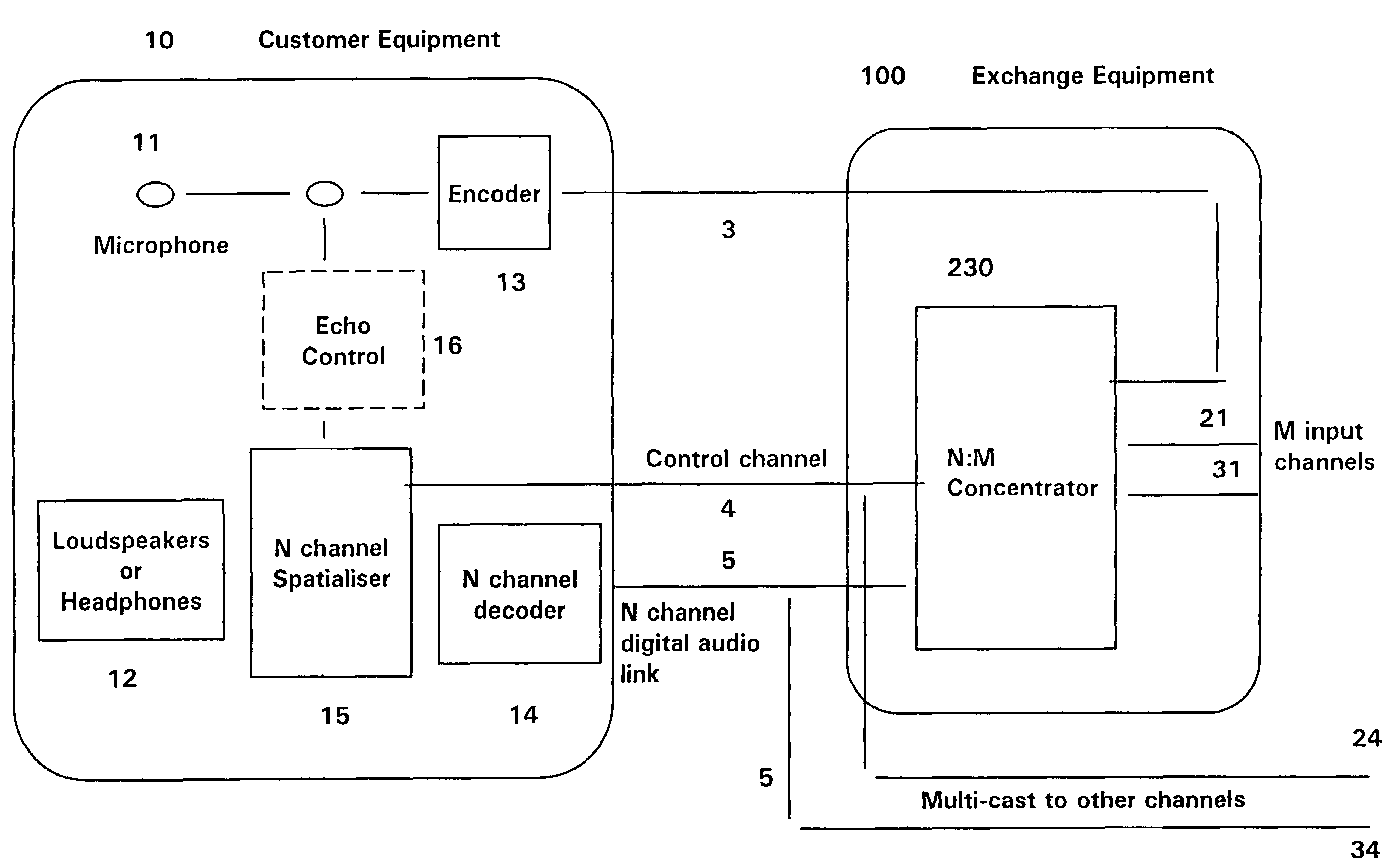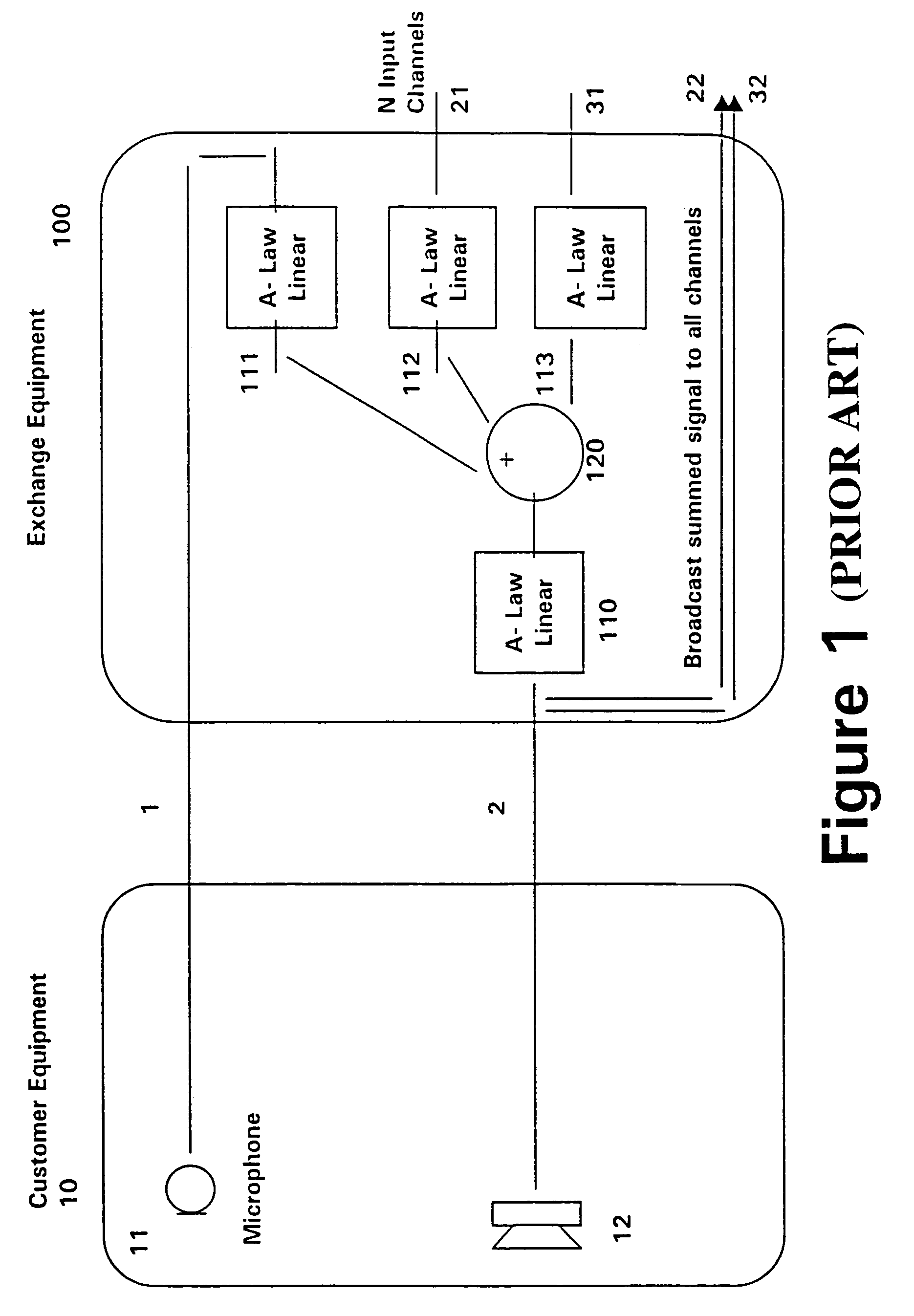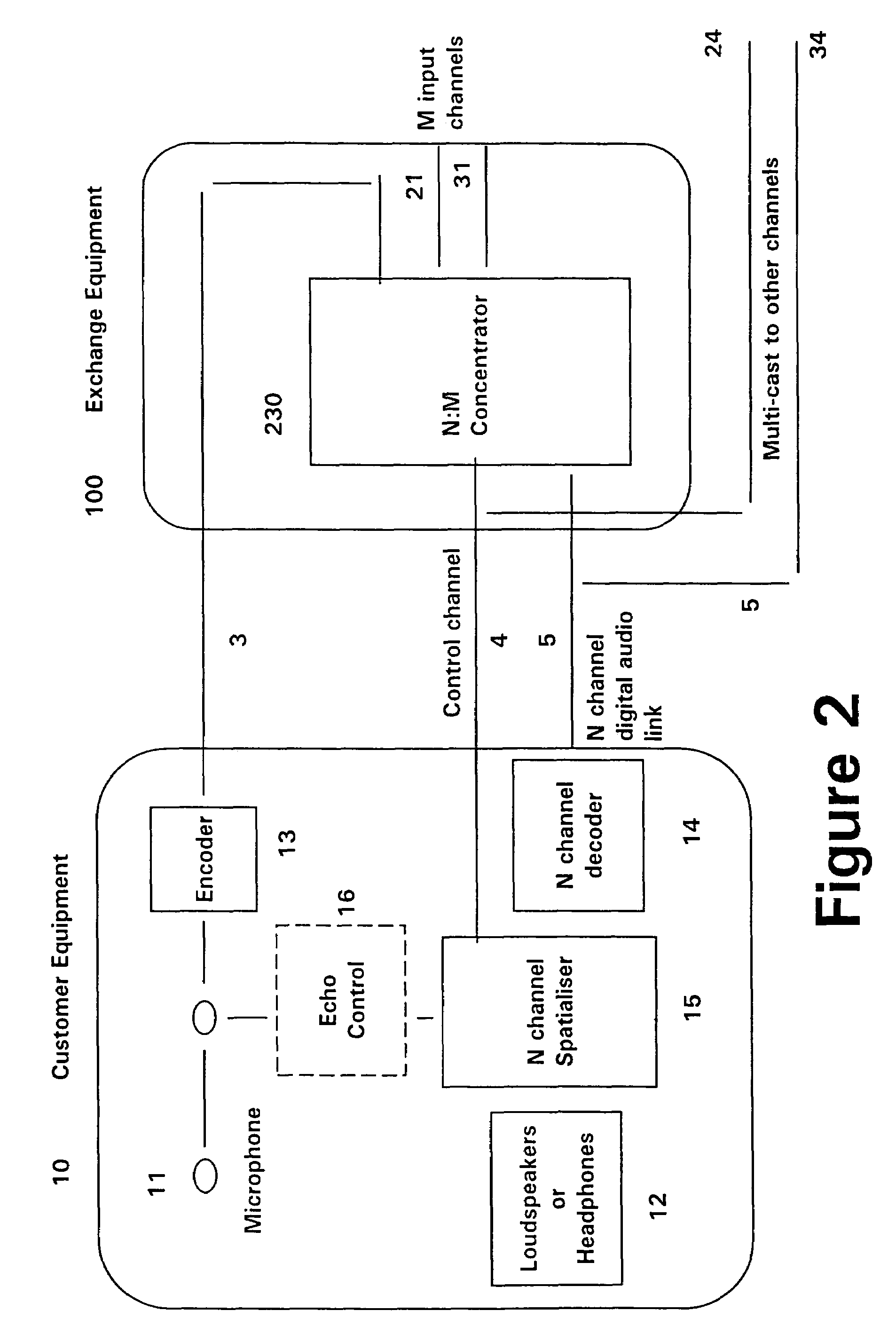Teleconferencing system
a teleconferencing system and audio technology, applied in the field of audio teleconferencing systems, can solve problems such as reducing the capacity required by multi-channel connections
- Summary
- Abstract
- Description
- Claims
- Application Information
AI Technical Summary
Benefits of technology
Problems solved by technology
Method used
Image
Examples
Embodiment Construction
[0015]In the conventional system illustrated in FIG. 1 the conference bridge located in the exchange equipment 100 receives signals from the various customers' terminal equipments 10, (20, 30 not shown) in response to sounds detected by respective microphones 11, 21, 31 etc. These signals are transmitted over the telephone network (1), to the exchange 100 at which the bridge is established. Generally the signals will travel by way of a local exchange (not shown) in which the analogue signals are converted to digital form, usually employing linear combining such as “A law” (as used for example in Europe) or “mu-law” (as used for example in the United States of America) for onward transmission to the bridge exchange 100. On arrival at the bridge exchange 100, the bridge passes each incoming signal 11, 21, 31 through a respective digital converter 111, 112, 113 to convert them from A Law to linear digital signals, and then passes the linear signals to a digital combiner 120 to generate...
PUM
 Login to View More
Login to View More Abstract
Description
Claims
Application Information
 Login to View More
Login to View More - R&D
- Intellectual Property
- Life Sciences
- Materials
- Tech Scout
- Unparalleled Data Quality
- Higher Quality Content
- 60% Fewer Hallucinations
Browse by: Latest US Patents, China's latest patents, Technical Efficacy Thesaurus, Application Domain, Technology Topic, Popular Technical Reports.
© 2025 PatSnap. All rights reserved.Legal|Privacy policy|Modern Slavery Act Transparency Statement|Sitemap|About US| Contact US: help@patsnap.com



